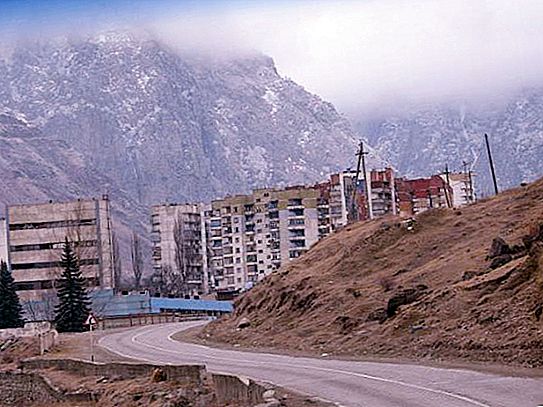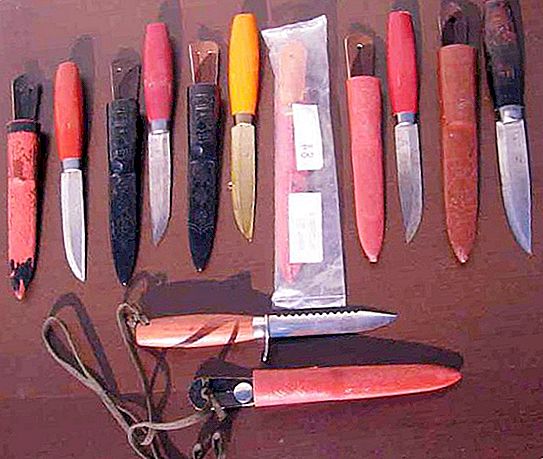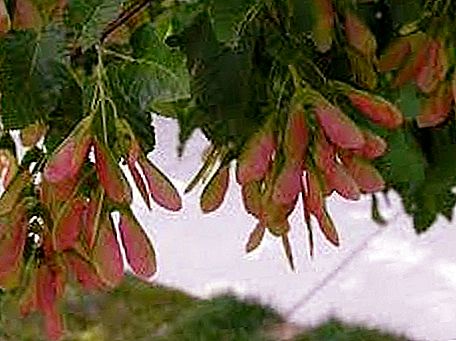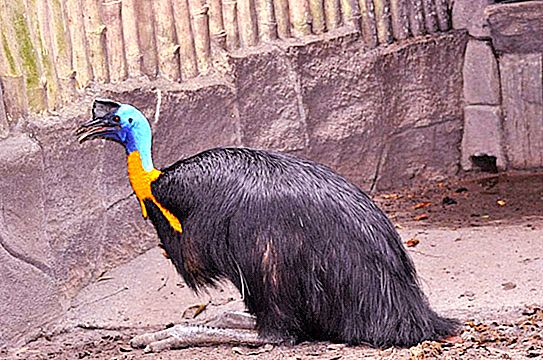The city of Tyrnyauz is located at an absolute height of over a thousand meters above sea level, in the upper reaches of the Baksan River, in Kabardino-Balkaria. It is the administrative center of the Elbrus region. It is 89 kilometers from Nalchik. The area of the city is 60 square kilometers. The postal code for Tyrnyauz is 361624.
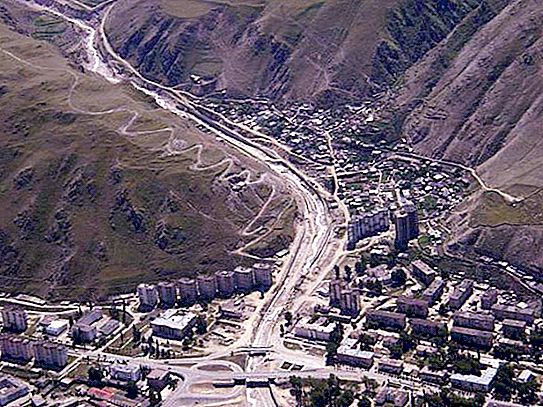
origin of name
According to philologists, “tyrnyauz” is translated from the Karachay-Balkarian language as “crane gorge”. In the city, you can really observe this phenomenon when, with fogs or low clouds, cranes fly low over the river valley.
There is another version of the translation of the toponym, where “tyrna” means “scratching”, “auz” means “gorge”, and the toponym is translated as “sided gorge”. To the base of the city, a wide valley was littered with pebbles, and its appearance resembled a deeply plowed furrow.
The geographical position of the city
The city of Tyrnyauz is located in the Baksan River Valley, 40 kilometers from Mount Elbrus. Through it, along the river valley, the Elbrus-Baksan road is laid, which leads to the foot.
The village is located in the mountainous part of the Republic of Kabardino-Balkaria. This is one of the highland cities of Russia.
Its entire territory is located in the valley of the Baksan Gorge.
The subsoil of the settlement is rich in deposits of feldspar raw materials, talc, tungsten, gypsum, mud clay, various types of marble, facing granites, molybdenum, high-strength granite gneisses, aplite (porcelain stone), roofing slates and other minerals.
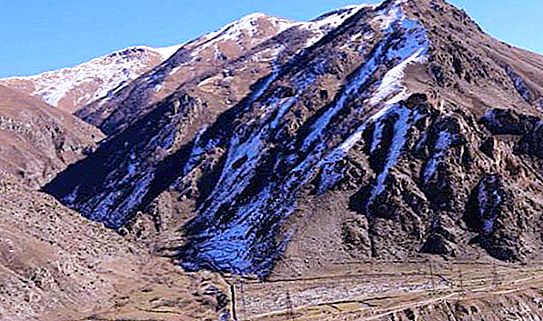
The city’s water resources are the Gerkhozhan-Su and Baksan rivers, as well as small streams flowing from the ranges. Many sources of mineral water have been discovered. The proximity of the mountains and the location in the gorge form a special type of climate in which the weather in the city of Tyrnyauz sharply differs from the conditions of the plain and foothill parts of the republic. The climate is characterized by sudden changes in temperature and strong dry winds from the mountains (hairdryer). The average air temperature is + 16 ° C in the summer and -4 ° C in the winter. The average annual is 6 ° C. Precipitation is about 850 mm per year.
History
In 1934, the village of Girkhozhan was founded near a tungsten-molybdenum ore deposit.
Three years later, the first plants began to be built in the upper reaches of the gorge.
In 1937, the village of Girkhozhan was renamed the village of Nizhny Baksan.
In 1955, the village was renamed Tyrnyauz and received city status.
No major historical events took place here. The city is interesting due to the fact that the Baksan Gorge is very popular among climbers and skiers in Russia, as well as among researchers of the Great Patriotic War. Indeed, here the highest mountain line of the front passed through the Elbrus passes.
With the collapse of the USSR and the closure of the molybdenum plant, the population of the city began to decline sharply. So, from 1989 to 2002. the population of the city decreased by a third. Mudflow landslides of 2000 contributed to the rapid and sharp decline in the population.
The fate of Tyrnyauz mines
The huge complex of the plant was built as soon as possible, and already by 1940 it was put into operation. However, in 1942 it had to be destroyed, since German troops approached the Baksan Gorge.
After the liberation of the territory from Nazi invaders, residents recreated the plant from ruins. Already in 1945, he again earned. For ten years, kindergartens and schools, a stadium and a hotel, the House of Pioneers and three clubs were built around it. The village of Nizhny Baksan turned into a typical settlement and was renamed. So in the Elbrus region appeared the city of Tyrnyauz, the mining workers' town.
By the end of the 1990s, the mining complex became one of the leading enterprises in the country. The city of Tyrnyauz in the CBD was recognized as one of the most comfortable and beautiful.
But in the 2000s, the plant almost stopped its work. It is currently in desolation. The population of the city decreased. But, there are prospects for the restoration of the plant and the city: there is a project for the construction of a mining and metallurgical complex in Tyrnyauz as a promising investment project for the development of industry in Kabardino-Balkaria.
Mudflow tragedy of the city
The city of Tyrnyauz became notorious in the middle of July 2000, when a powerful village fell on the city. The destruction of the automobile bridge, the flooding of residential buildings. More than 1000 people were evacuated, 8 were killed, 8 were injured and about 40 were missing.
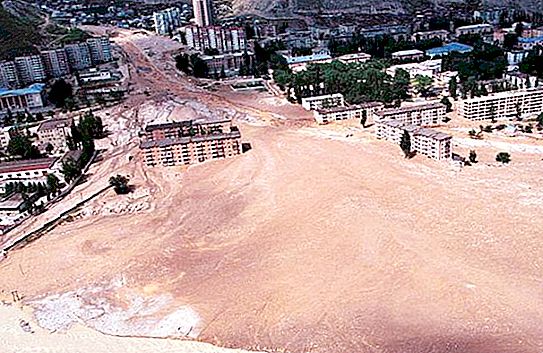
After 17 years, the tragic fate of the city was repeated. So, on August 14, 2017, a powerful village descended on the city of Tyrnyauz. Emergency mode has been introduced. By happy coincidence, the mudflow did not affect the socially significant objects of the city and residential buildings of the townspeople. About 300 people were evacuated from dangerous regions. The administration of the city of Tyrnyauz and all operational services were on high alert. The work of the task force and the headquarters was organized.
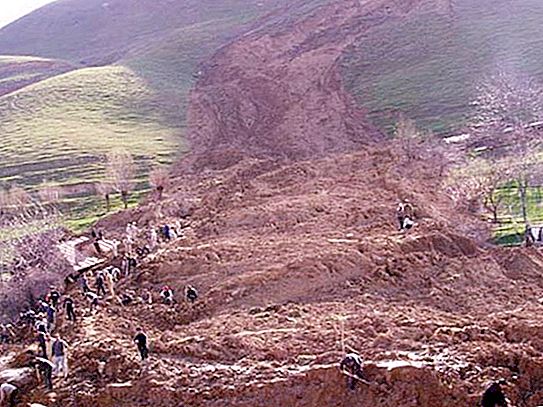
The population of the city of Tyrnyauz
As of 2017, 20, 574 people live in the city.
The main part of the population of Tyrnyauz in national terms is the Balkars - 52% of the total number of citizens, Russians - 25%, Kabardins - 15%. A population density of approximately 337 people per square kilometer. The age and sex structure is dominated by the population aged 15 to 60 years old - 69% of the total number of citizens, up to 14 years old - 18%, the proportion of pensioners over 60 years old - 13%. The average age of citizens is 36 years. The proportion of women is 55%, and men - 45%.
Education, health and culture
In the city of educational institutions there are 4 primary and 3 secondary schools, a gymnasium and a lyceum. In addition, there is a Special Child Rehabilitation Center created for children with disabilities. It provides assistance to parents in raising such children.
Of the health facilities in the city there are a dental clinic, a district clinic and a district hospital.
Of the cultural institutions, the Center for National Crafts, the Central Library, the Museum of Local History and the stadium for 2500 people open their doors here.
sights
Tyrnyauz sights of the Elbrus region are few. The development of the city is mainly one-story, as well as 3-4-story houses. But there are several skyscrapers that were built in the 50s of the 20th century. Industrial buildings are located in a steep rock.
There are no historical buildings and structures in the city; all of its development was carried out in the 20th century.
During the years of World War II, 16, 000 Balkars (30% of the Balkar population) took part in the struggle against the Nazi invaders. In honor of them, a stele was installed in the city center and the Eternal Flame was lit.
A special place in the city is occupied by a modest monument, which is located on a peak above the city. This is an obelisk of Fleur Vera. The monument is dedicated to the discoverers of the ore deposits of these places.
The sad story of Flerov Vera and Orlov Boris
Boris and Vera met in 1932. She was a student student, and he was a geologist. Together they were engaged in research and geological exploration in the Tyrnyauz ridge.
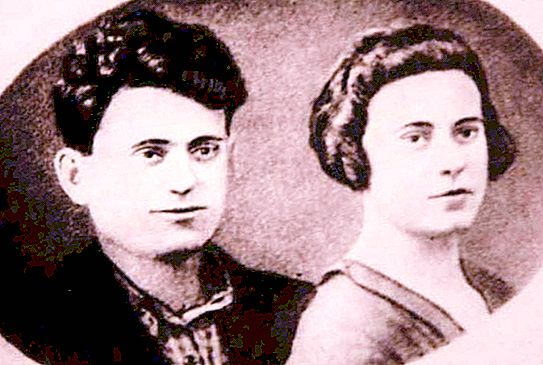
Hunters very often found strange stones with lead here, but very unusual, since it could not be cast from it. These samples were brought to geologists. They performed an analysis and revealed that it is molybdenum. The discovery of the field marked the beginning of the industrial life of the city.
Vera and Boris continued to study the scree of the ridge. They fell in love and wanted to get married. But the tragic fate violated their plans. In 1936, near the settlement of Nizhny Baksan (Tyrnyauz), the girl fell from a rope bridge into the gorge and crashed.
Boris outlived her not much. During the war years, he went to the front, in 1945 he was discharged, returned to Tyrnyauz to the plant. However, in January 1946, he also died tragically.
The created factory, on the site of the field they discovered, has long been the pride of the Republic of Kabardino-Balkaria.

In honor of them and their love, an obelisk is erected over the city.
Famous people born in Tyrnyauz
- Zaur Kuramagomedov, Greco-Roman wrestler, champion of Russia, medalist of the European and World Championships, bronze medalist of the Olympics in London.
- Valery Kokov, the first president of the Republic of Kabardino-Balkaria.
- Khadzhimurat Akkaev, weightlifter, Olympic medalist in Beijing and Athens.
- Igor Konyaev, theater actor and director, laureate of the State Prize of Russia.
- Igor Rozin, climber, priest of the Russian Orthodox Church.
- Tanzilya Zumakulova, poet.
Museums and galleries
The main attraction is the Elbrus Museum of Defense. It is considered the highest museum in the world. Located at an altitude of 3500 meters above sea level in the village of Terskol.
The city also has a museum of local lore of the Elbrus region of Kabardino-Balkaria, which displays expositions about the nature and history of the native land, about the Great Patriotic War, about the mining complex and the history of the discovery of the deposit.

